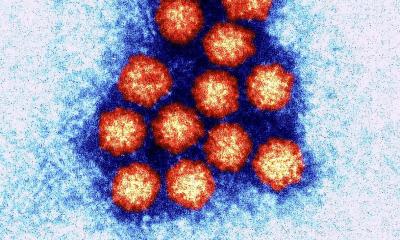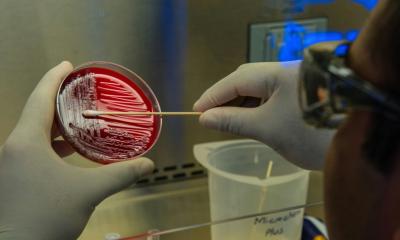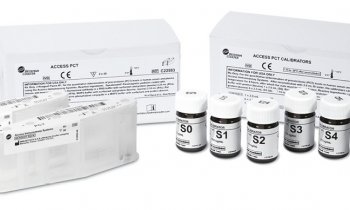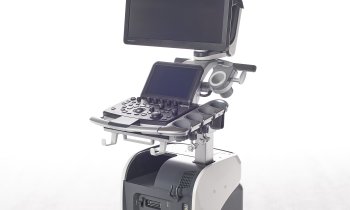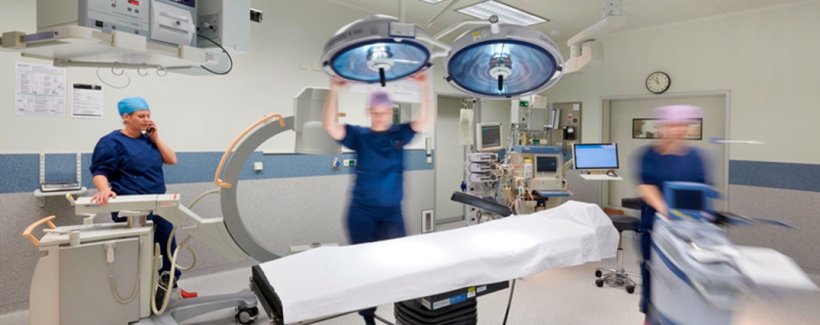
Image source: LUMC
News • Promising project PERISCOPE
AI predicts risk of infection after operation
A new AI model will soon be able to predict the risk of infection in postoperative patients. This will allow healthcare providers to take preventive measures and detect complications at an earlier stage.
The Leiden University Medical Center (LUMC) will use the model as a standard tool. The AI tool (PERISCOPE) predicts the risk of infection within seven and 30 days of an operation. PhD researcher Siri van der Meijden helped develop and test it. She also researched the steps needed to implement the model. She defended her PhD on 6 May.
PERISCOPE will not only save time but also help doctors determine which patients could be discharged and which ones not, and which patients they will need to see an additional time, at an outpatient clinic for example
Siri van der Meijden
The idea for the AI predictor came from the need to improve the prediction of which patients will and won’t develop infections after an operation. Five to 20% of postoperative patients currently develop such an infection. In around half of these, the wound becomes infected. Then there are lung infections, urinary tract infections and in rare cases bloodstream infections (sepsis). The infections keep patients in hospital longer, lead to readmissions and may mean patients need multiple treatments. PERISCOPE should help healthcare providers determine which patients need extra monitoring. ‘Knowing which patients are more at risk, will allow us to keep more of an eye on and treat them sooner’, says Van der Meijden. ‘This will help us improve patients’ quality of life and reduce the impact of infections on the healthcare service.’
Van der Meijden and her team used almost ten years of historical patient data from the electronic patient file (EPD) to feed the AI model. This data was pseudonymised, meaning that the researchers could not trace the data back to patients. ‘We then looked at different factors. For example, whether patients had infections in the past. Or whether they had other conditions such as diabetes (comorbidity). And there are other important factors such as: heart rate, weight, blood pressure and so on. We linked that information to whether patients actually developed infections. Then the machine started learning.’
The model was then tested extensively on more than 250,000 historical surgical procedures in three hospitals: the LUMC, Radboudumc and Ziekenhuis Oost-Limburg in Genk (Belgium). ‘During the tests in the LUMC, we compared 500 predictions by the AI model with doctors’ predictions’, says Van der Meijden. ‘PERISCOPE performed just as well as experienced doctors, and better when participants were unsure about their prediction or had less experience. That means this tool can be of extra value if doctors are unsure and can help less experienced doctors make decisions.’
Recommended article

Article • Technology overview
Artificial intelligence (AI) in healthcare
With the help of artificial intelligence, computers are to simulate human thought processes. Machine learning is intended to support almost all medical specialties. But what is going on inside an AI algorithm, what are its decisions based on? Can you even entrust a medical diagnosis to a machine? Clarifying these questions remains a central aspect of AI research and development.
Specialists, doctors, junior doctors and nurses from departments such as general surgery, orthopaedics and neurosurgery will use the AI predictor. On a screen they will see a patient’s infection risk in a percentage and a category: low, medium or high. This dashboard also provides relevant patient data from the EPD. Having all the information presented together means healthcare providers will no longer have to look through an entire patient file to assess whether a patient is developing an infection. ‘PERISCOPE will not only save time but also help doctors determine which patients could be discharged and which ones not, and which patients they will need to see an additional time, at an outpatient clinic for example. We will also train the departments on how to use the tool.’ Rather than replace doctors, the AI model will support their decision-making. ‘The clinical protocols and doctor’s opinion will continue to take precedence’, Van der Meijden stresses.
Although the tool is ready to use, it will take a while before it can be used in clinical practice. ‘The biggest challenge is integrating our model in the LUMC’s electronic patient file. Once we’ve managed that, we’ll be able to go live. We expect that to be mid-2026. We’re currently busy with preparations and integrations at other hospitals.’ This brings an intensive preparation process to an end for now. It took five years to make the tool ready for use. Much of this time involved waiting for official approval of PERISCOPE as a medical aid. Various steps had to be taken to comply with safety and quality rules and regulations. The tool is now being gradually introduced at the relevant departments.
Van der Meijden also spent a lot of time collecting and delineating patient data, so the data could be compared. When exactly can you say someone has an infection? What factors are involved? This was discussed in detail, says Van der Meijden, including with orthopaedic, infectious disease, microbiology and intensive care departments.
Van der Meijden continues to develop PERISCOPE because unlike other AI tools, this predictor does not automatically learn. To make the tool smarter, new data needs to be added. ‘It would be good in the future if PERISCOPE could predict the likelihood per type of infection’, says Van der Molen. ‘We are also looking at whether AI can make a prediction before instead of after an operation. In the long term, the tool may also be able to predict other complications, such as the chance of bleeding, readmission or death.’
The long-term impact of the AI model is something only time will tell. Van der Meijden is also researching this.
Source: Leiden University Medical Center
12.05.2025




